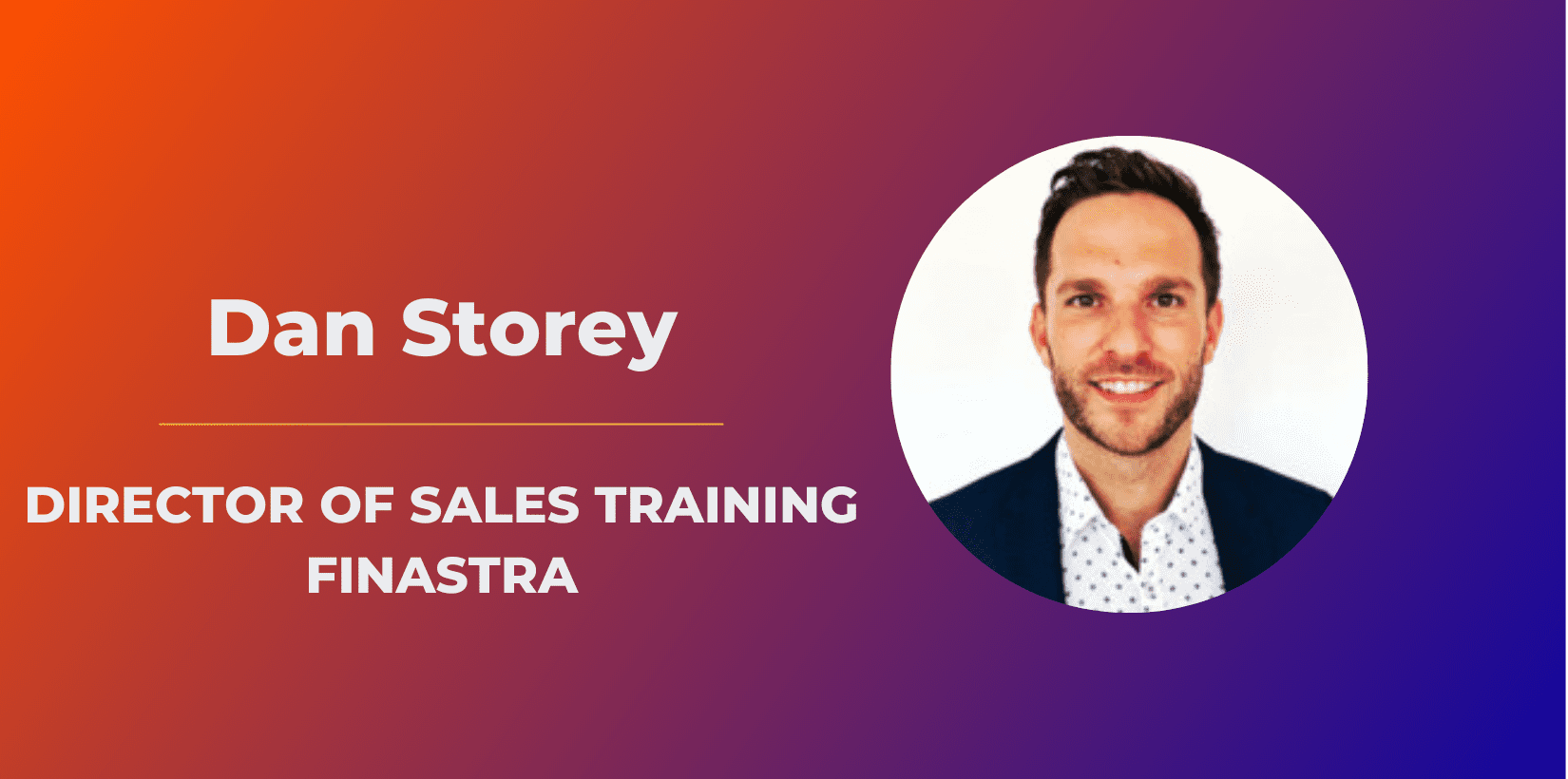Episode summary
Finastra, a leading global banking software company, partners with Mindtickle to optimize sales training and drive success. With 90 of the top 100 banks relying on Finastra, their 600-member sales team undergoes 20 comprehensive training programs worldwide. Director of Sales Training, Dan Storey, highlights the transformative power of Mindtickle’s Sales Readiness Index in assessing training impact. By leveraging Missions and multi-choice assessments, Finastra measures training retention and application within its sales force.
Key highlights
- Missions and multi-choice assessments help the Finastra team understand if go-to-market programs are working and transferring knowledge effectively
- Using the Sales Readiness Index to predict pipeline generation and sales success
- Utilizing Mindtickle Professional Services to identify their ideal rep profile so those core competencies can be built into their go-to-market training
- Sharing Mindtickle reporting with the C-suite helps them make judgments based on performance and take corrective action
Video transcription
We’re using Mindtickle to assess our sales training platform, our sales training knowledge, and our enablement program. So largely, we’re using the Missions and multichoice assessments on the learning side, to really understand if our go-to-market programs are working if they’re being effective if we’re transfer, transferring the knowledge across. And really, ultimately, if sales were able to articulate that when they get into the field.
We’re using the Mindtickle Readiness Index, and we’ve got a fairly complex go-to-market knowledge set. We’ve got seven different criteria that we’re assessing across multi-choice quizzes across Missions. Ultimately, we’re using that to predict pipeline generation and sales success later down the track, but it’s really the Missions and the multi-choice assessments are able to fully understand how much of the training that we’re doing is sticking with our salespeople, and then how much they’re able to apply.
We’re working with a professional services team to figure out what our ideal profile is, we know we’ve got knowledge competencies. We’ve definitely defined those and they’re built into our go-to-market program. What we’re now working on is their kind of skill competencies is difficult for us, we’ve got a very long sales process, very established salespeople we’ve been selling for 10-15 years. So it’s challenging for the experienced ones.
But for newer salespeople, like our sales development reps, we’ve got very clear track skills that we want them to cover. And we’ve got a two-year development path that we’re able to help build that over an app starts with their onboarding, but also go through a number of certification programs where we use Missions and knowledge checks along the way to make sure they’re meeting the kind of benchmarks at each stage of that career journey. What we are able to do on some of the factor elements is at least identify trends with our performance. So some top performers are using and engaging with the content, some of our low performers are not engaging with the content.
We’re able to identify that and then share that insight with the leadership team. And then they can make judgments based on performance based on what they’re seeing. We’re already seeing these anecdotal elements where we can make corrective behavior in the sales teams. So the impact that we’ve been able to have so far is to have about a 70% reduction on global go-to-market training.
I’ve been in the company just over a year when I inherited the team. The first question I was asked is, “We just did our global go-to-market training, did it work?” My question back was, “What did you measure when there weren’t any measures in place?” So this is the reason why we brought my Mindtickle to measure that.
We have a global sales team of about five 600 people all in 20 different programs that we’re running globally, and we had no way to correlate or compare the impact of training, we spent 1000s and 1000s of man hours training people without any impacts or measurement on the effectiveness of that. So what we’ve done is, you know, if we think about Kirkpatrick is we’ve gone to learning, and we can now define what people have learned as a result of the training.
Ultimately, the components of that how that’s going to predict behavior. So, so far level learning. So level two on Kirkpatrick, we have got level three in terms of behavior, so Missions and things to see if people can articulate it, which I think is a lot better than we were so we know that the go-to-market programs have been effective at transferring knowledge. Now we just have to see if that knowledge is turning into results.
How do you measure Sales Enablement?
Learn more about the Sales Readiness Index and how it's helping sales enablement and RevOps leaders prove the value of their efforts, improve seller productivity, and drive revenue.
Read More


 By Vivian Batman
By Vivian Batman
 By Rahul Mathew
By Rahul Mathew
 By Aman Bafna
By Aman Bafna